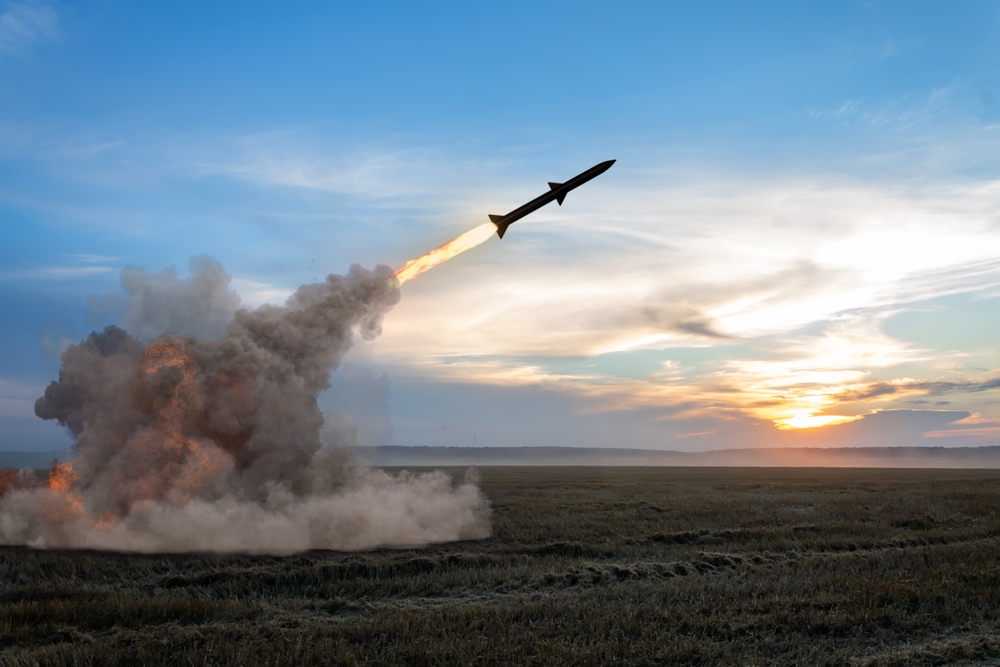Russia’s deployment of a nuclear-capable ballistic missile with multiple warheads (MIRVs) in the Ukraine conflict marks a watershed moment in modern warfare. This escalation by Moscow not only intensifies the Ukraine war but also raises pressing concerns about global nuclear stability and the future of deterrence.
A Break from Deterrence Doctrine
The use of a ballistic missile equipped with MIRVs—a technology designed during the Cold War for deterrence—is unprecedented in combat. “To my knowledge, yes, it’s the first time MIRV has been used in combat,” said Hans Kristensen, director of the Nuclear Information Project at the Federation of American Scientists. MIRVs, or “multiple independently targeted reentry vehicles,” enable a single missile to strike multiple targets, vastly increasing its destructive potential.
For decades, ballistic missiles were the backbone of “mutual assured destruction” (MAD), a doctrine that ensured both sides in a nuclear standoff would face catastrophic retaliation, thus deterring nuclear conflict. However, the introduction of MIRVs into active combat raises fears that this deterrence framework may be eroding.
MIRVs: A Double-Edged Sword
MIRVs, while formidable, are viewed by analysts as weapons that could invite a first strike rather than prevent one. Their high destructive capability and vulnerability to preemptive attacks make them attractive targets. “It’s easier to destroy multiple warheads before they are launched than try to shoot them down at hypersonic speeds,” Kristensen and colleague Matt Korda wrote in a March study.
This dynamic creates a “use them or lose them” scenario, where countries may feel pressured to launch MIRVs preemptively during a crisis. The Union of Concerned Scientists has warned that losing MIRV-equipped missiles in a first strike could disproportionately weaken a nation’s ability to retaliate, incentivizing leaders to act first.
Russia’s Missile Strike: A Dangerous Precedent
Videos from Thursday’s Russian strike on Dnipro show multiple warheads descending at different angles, overwhelming Ukraine’s air defenses. While these warheads were not nuclear, their use in conventional warfare raises significant concerns. The attack demonstrates how even non-nuclear MIRVs can disrupt air defense systems, creating a new layer of complexity for military planners.
Notably, Russia alerted the United States about the missile launch in advance. Despite this warning, experts fear that repeated use of such missiles could heighten tensions across Europe and undermine decades of efforts to maintain global nuclear stability.
The Expanding MIRV Club
Russia and the United States are not alone in their MIRV capabilities. China, the United Kingdom, and France also possess MIRV-equipped ballistic missiles. Emerging nuclear powers like Pakistan and India have begun testing MIRV technology, with India announcing a successful test of a MIRVed intercontinental ballistic missile (ICBM) earlier this year.
Analysts like Kristensen and Korda warn that the proliferation of MIRVs represents a dangerous trend in global nuclear arsenals. Land-based MIRVs, particularly those in stationary silos, are especially vulnerable to preemptive strikes, making them destabilizing elements in a crisis. Submarine-launched MIRVs, by contrast, are less detectable and less likely to provoke first-strike calculations.
A Looming Nuclear Arms Race
The growing adoption of MIRVs is fueling what analysts describe as an “emerging nuclear arms race.” China’s deployment of MIRVs on its DF-5 ICBMs, Pakistan’s development of MIRVed missiles, and the United Kingdom’s decision to increase its nuclear stockpile reflect a global shift toward more advanced and potentially destabilizing nuclear capabilities.
“A world in which nearly all nuclear-armed countries deploy significant MIRV capability looks far more dangerous than our current geostrategic environment,” Kristensen and Korda wrote. This proliferation undermines crisis stability, increasing the likelihood of rapid escalation in times of conflict.
Russia’s use of MIRVs in the Ukraine war sets a troubling precedent for global security. As MIRV technology spreads to more nations, the risks of miscalculation and preemptive strikes grow exponentially. In an already tense geopolitical landscape, this development underscores the urgent need for renewed arms control efforts to prevent a slide into a more volatile nuclear future.







